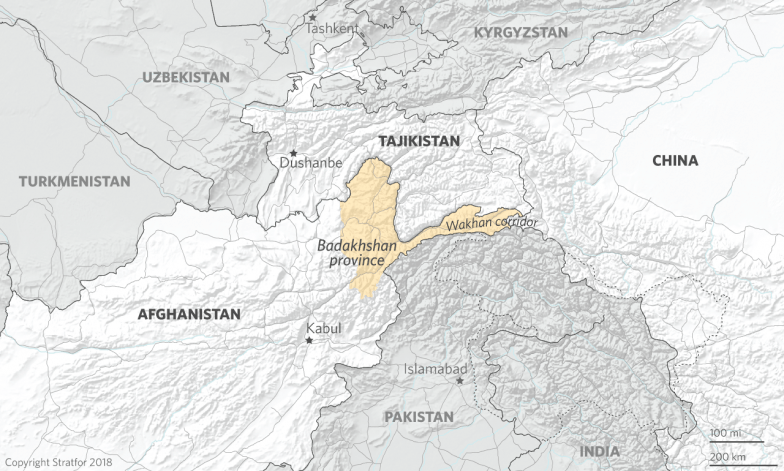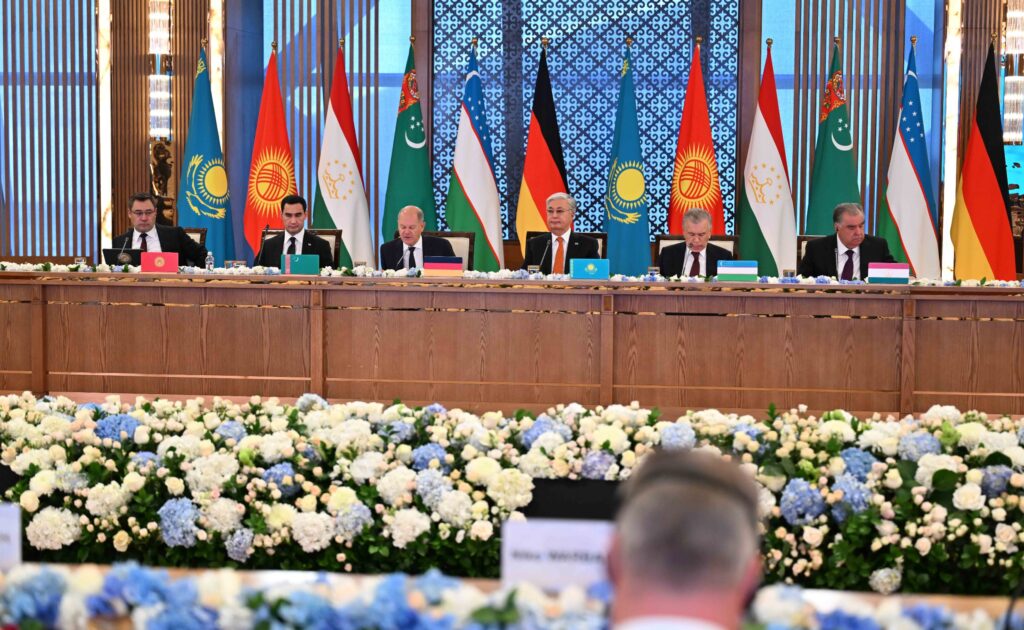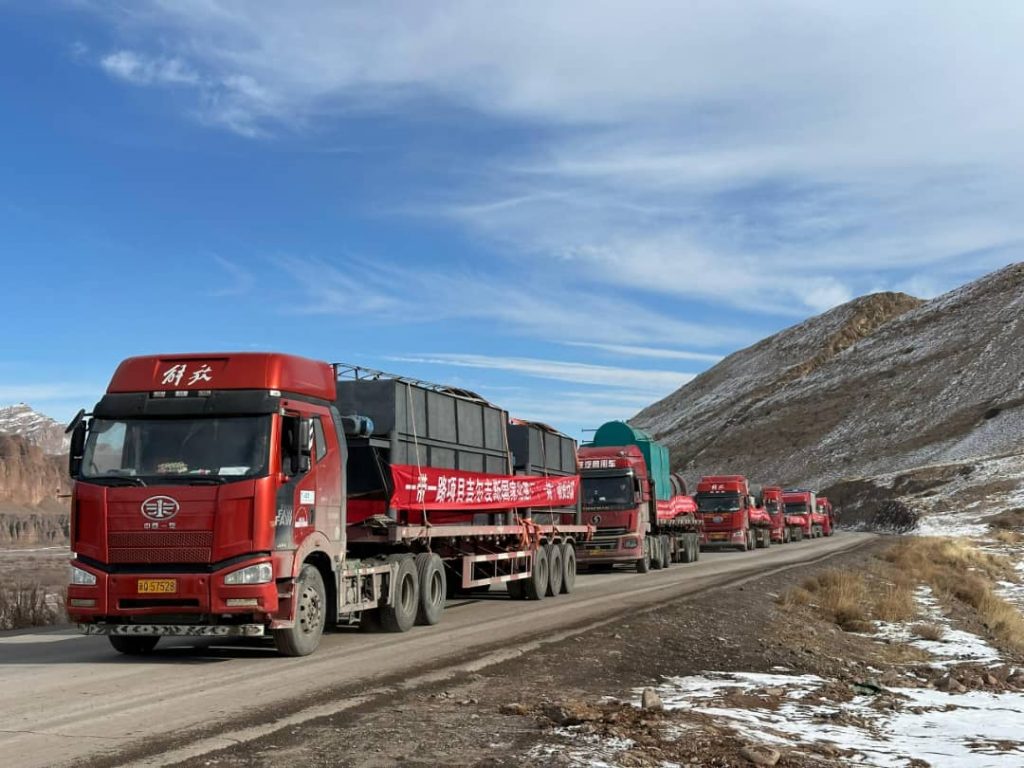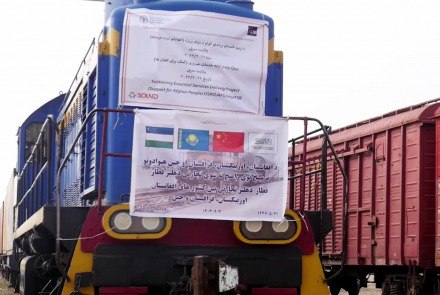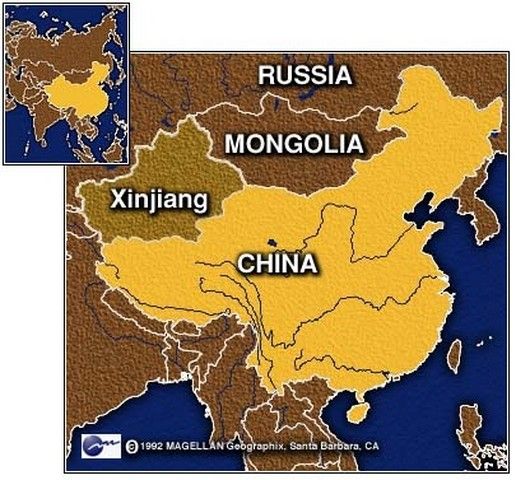BISHKEK (TCA) — China’s interest in Afghanistan is shifting from the economic to the military sphere, but this interest is explained by Beijing’s efforts to secure its Xinjiang province from extremist and terrorist activities that may be based across the border in Afghanistan’s Badakhshan region. We are republishing this article on the issue by John C. K. Daly, originally published by the CACI Analyst:
In December 2017 during a meeting in Beijing between Chinese Defense Minister Chang Wanquan and Afghan Defense Minister Tariq Shah Bahrami, China’s Central Military Commission vice chairman Xu Qiliang stated that China would build a military facility in Afghanistan’s northeastern Badakhshan province to “strengthen pragmatic cooperation in areas of military exchange and anti-terrorism and safeguard the security of the two countries and the region, making contributions to the development of China-Afghanistan strategic partnership of cooperation.” China’s main motive is to interdict the flow of Uyghur militants to and from Xinjiang, yet the initiative potentially has wider implications for Afghanistan and the region.
BACKGROUND: China has made significant investments in Afghanistan, including a US$ 3 billion copper mining project in Mes Aynak in Logar province, which has stalled because of security concerns. Despite these investments China has shied away from participating in international pacification efforts in Afghanistan. That is apparently changing with Beijing’s announcement that it will be underwriting the Badakhshan facility, in a province which shares a 47-mile frontier with China’s restive Xinjiang Uygur Autonomous Region along the eastern end of Badakhshan’s 130 mile-long Wakhan Corridor, in which the Wakhjir Pass in the Pamirs is the sole pass between Afghanistan and China.
The Chinese military has apparently already begun limited security incursions into Afghanistan. On November 3, 2016, India’s World is One News agency published an article showing Chinese Mine Resistant Ambush Protected and Humvee-type vehicles patrolling in Badakhshan’s Little Pamir region, adjacent to the Chinese border, adding that regional eyewitnesses accuse the Chinese military of direct involvement.
China’s new involvement with the Afghan military stems from the belief that Badakhshan has increasingly become a base for Xinjiang’s Uyghur militants who use the Wakhjir Pass in the Wakhan Corridor to move between Afghanistan and Xinjiang, which was historically used as a trading route between Badakhshan and Yarkand.
Another wildcard in China’s military interest in Afghanistan has been the rising presence there of the Islamic State in Iraq and Syria (ISIS), whose global jihadist intentions stand in contrast to the Afghanistan-oriented Taliban. Mohammad Mohaqiq, the deputy chief executive officer of Afghanistan observed that “The north of Afghanistan from Badakhshan to Badghis and Herat were secure, there was no war in the areas but with the presence of Daesh (ISIS), today the north of Afghanistan is at war.” According to an Afghan Ministry of Defense source, “The Chinese side fears that the Chinese Uyghurs, who are among the terrorists now, can cross the territory of China through Afghanistan and make problems for the Chinese authorities.” The source added that ISIS militants active in northern Afghanistan now include ethnic Uyghurs from China’s Xinjiang province. Beijing fears that, after acquiring combat experience, they will use Badakhshan’s remote Wakhan Corridor to infiltrate back into Xinjiang to undertake terrorist attacks there.
Beyond financing the Badakhshan facility, China is also providing funding for the Afghan military to build a mountain brigade. Afghan Member of Parliament Ghulam Hussain Naseri said of the initiative, “This is not support for the security of Afghanistan because they have their own interest. China is trying to protect its own borders from Daesh (ISIS) and they have the right to do so.”
A further factor complicating security operations in Badakhshan is the fact that militants based there not only control the drug trade, but are harvesting revenue from the illicit mining operations including for lapis lazuli, gold and marble. In 2017, 9,000 tons of opium were produced in Afghanistan. According to the United Nations office on Drugs and Crime, overall opium production in Afghanistan surged 63 percent in 2017. Badakhshan saw a significant increase of 32percent in opium poppy cultivation from 6,298 hectares to 8,311 hectares, making it number 10 among the 24 provinces in Afghanistan cultivating opium poppies. In September 2016, Badakhshan’s Provincial Governor Ahmad Faisal Begzad said that militants had been collecting revenues of lapis lazuli mines in the province’s Karano Manjan district for years, diverting the revenues to jihadist activity.
Highlighting the province’s importance to the Taliban, in its July 2017 offensive the Taliban killed at least 32 members of the local police and government-aligned uprising groups in a push to capture Badakhshan’s Tagab district. In a measure of the firmness of their grip upon parts of Badakhshan, two months later the Taliban announced that their mujahideen of the Islamic Emirate began the construction of a new Jama Masjid (public mosque) in Wardaj district of northern Badakhshan. Maulana Qari Fasihuddin, the governor of the Islamic Emirate in the province’s Wardaj district, laid the foundation stone of the new mosque.
IMPLICATIONS: While China has traditionally delineated its engagement with post-2001 Afghanistan around economic and technical cooperation, that paradigm is shifting. Chinese leaders have always seen stability in Afghanistan as having a direct influence on security within Xinjiang. It is increasingly obvious that after 17 years of foreign intervention, the security situation in Afghanistan remains unstable, compelling the Chinese government to take a more proactive stance in providing security along Xinjiang’s western borders.
The Security Council visit to Afghanistan highlighted a grim truth to its participants; after 17 years of war, peace remains elusive. Even the U.S. government is acknowledging this reality, albeit quietly. U.S. military officials say the balance between the Taliban and Afghan government-led forces is a stalemate, despite coalition military casualties of more than 3,500 killed and 33,000 wounded since 2001. U.S. Secretary of State Rex Tillerson recently told the Taliban, “You will not win a battlefield victory. We may not win one, but neither will you.” Concerns about Afghanistan’s domestic security are rising; according to Afghan President Ashraf Ghani, 21 international terrorist groups are now operating in his country.
In such an environment, China must seek bilateral accommodation with the Afghan government to stabilize Badakhshan province, along with sealing the border as much as possible to restrict the movement of militants. While China has in the past contributed troops to participate in UN peacekeeping missions, there is no evidence that this option is being considered at present. Accordingly, and in light of either a military or political solution to the ongoing crisis in Afghanistan, underwriting an Afghan military base in Badakhshan is a prudent bilateral prophylactic measure for China to undertake. At the very least it will accommodate an increased Afghan military presence in a province deemed critical by the Chinese government to security in Xinjiang, where stability remains elusive, though on a much smaller scale.
A further incentive for Beijing to stabilize its Western frontiers is its ambitious “One Belt, One Road” Eurasian economic development plan, which Afghan instability puts at risk. Beyond Afghanistan being an underdeveloped market for Chinese exports, the country could also become a significant element of the ambitious US$ 46 million China-Pakistan Economic Corridor (CPEC) project, interweaving China’s transport infrastructure into Pakistan. The feasibility of transporting substantial cargoes via rail through Afghanistan remains uncertain. As the Asian Development Bank noted in a recent study, “the transport sector performance in Afghanistan is affected by three main problems: inadequate infrastructure, limited government capacity, and insecurity.” Accordingly, increased security in the Wakhan Corridor would serve a twofold purpose for Beijing, lessening the opportunity for militants to slip in and out of Xinjiang while also laying the groundwork for developing a transport infrastructure.
CONCLUSIONS: China’s military assistance to Afghanistan must be seen in the light of the domestic security issues and increased trade possibilities provided by an improved transport infrastructure; while it will in no way prove decisive in the Afghan government’s operations against the insurgency, it may well achieve some success in interdicting the flow of Uyghur militants to and from Xinjiang, a policy consideration of rising importance to the Chinese government.
The province is now belatedly coming to the attention of Afghanistan’s International Security Assistance Force (ISAF), which in early February for the first time conducted limited bombing strikes in Badakhshan’s Warduj district.
Joint efforts by Beijing and Kabul to secure the frontier will not have a solely bilateral impact; while Badakhshan’s Wakhan Corridor may be remote, Chinese efforts to secure its border there will not go unnoticed by India, Pakistan and Tajikistan, particularly as China has unresolved regional issues with both New Delhi and Islamabad in Kashmir. Besides ISAF, Indian and Pakistani interest in China’s dealings with their neighbor will undoubtedly increase, particularly if the proffered aid to Afghanistan by China evolves from merely fiscal and military materiel to “boots on the ground.”
